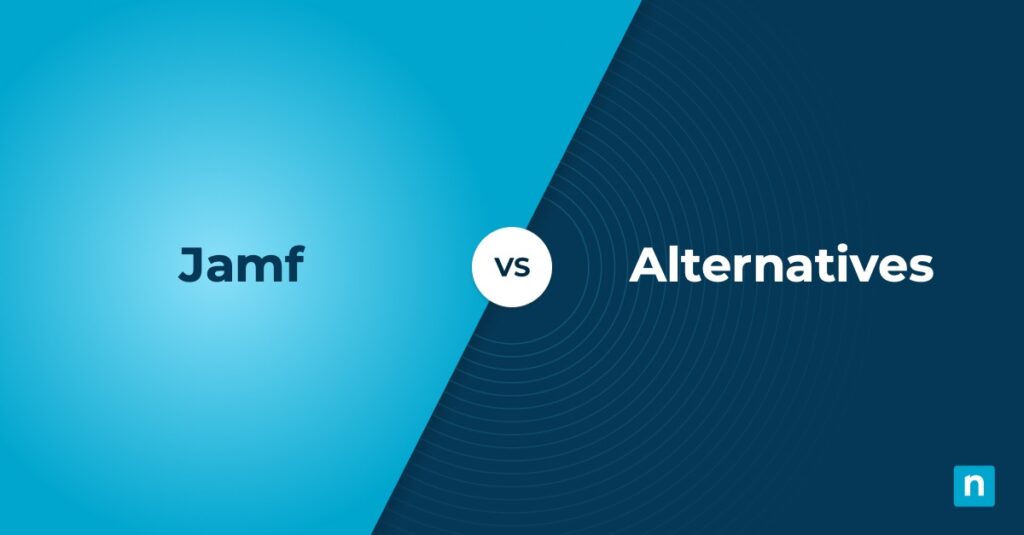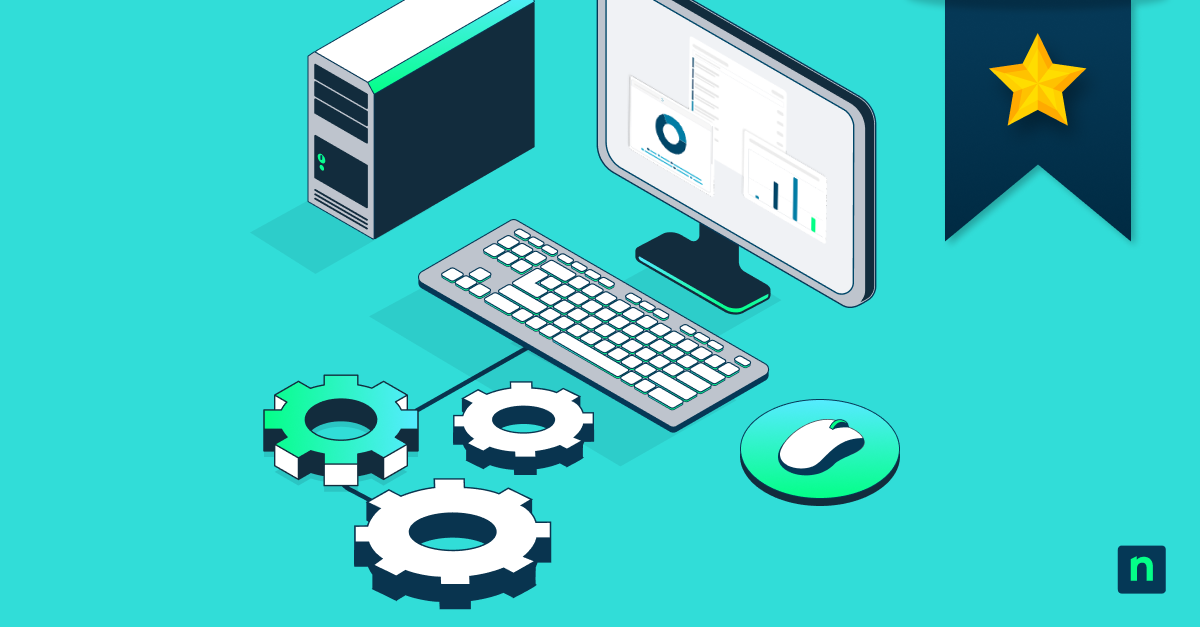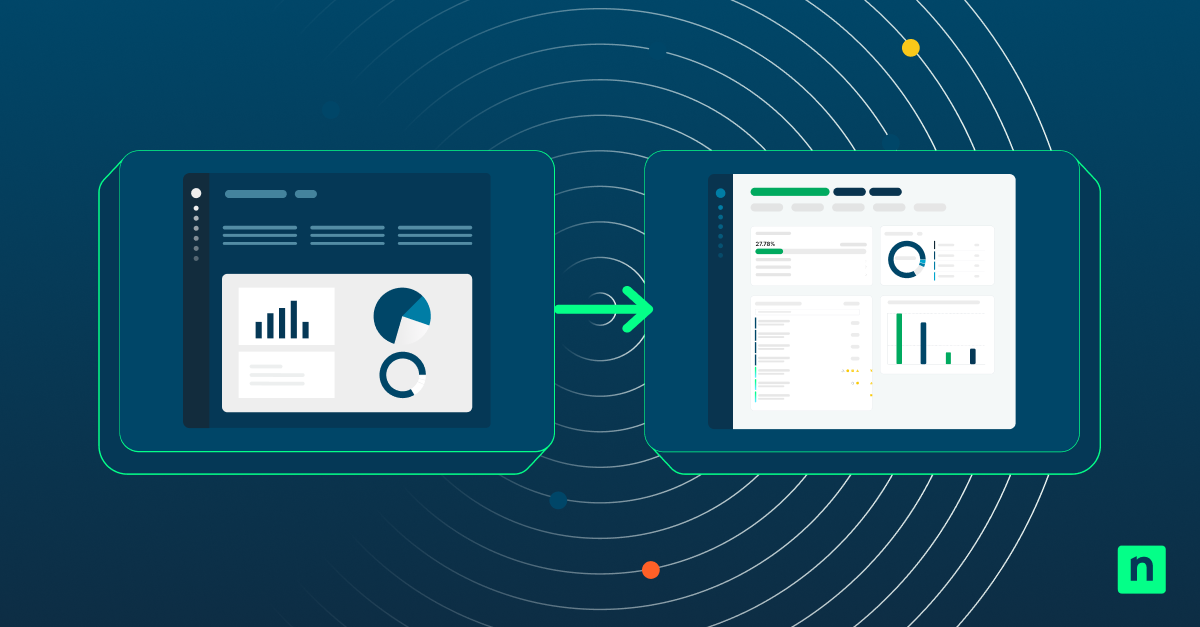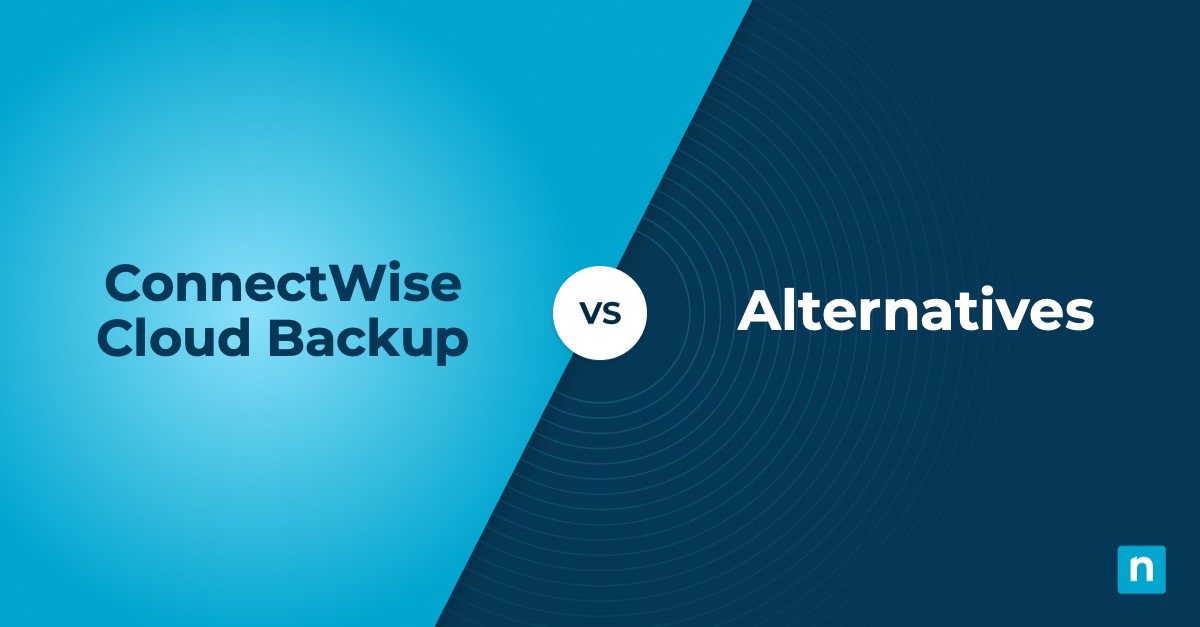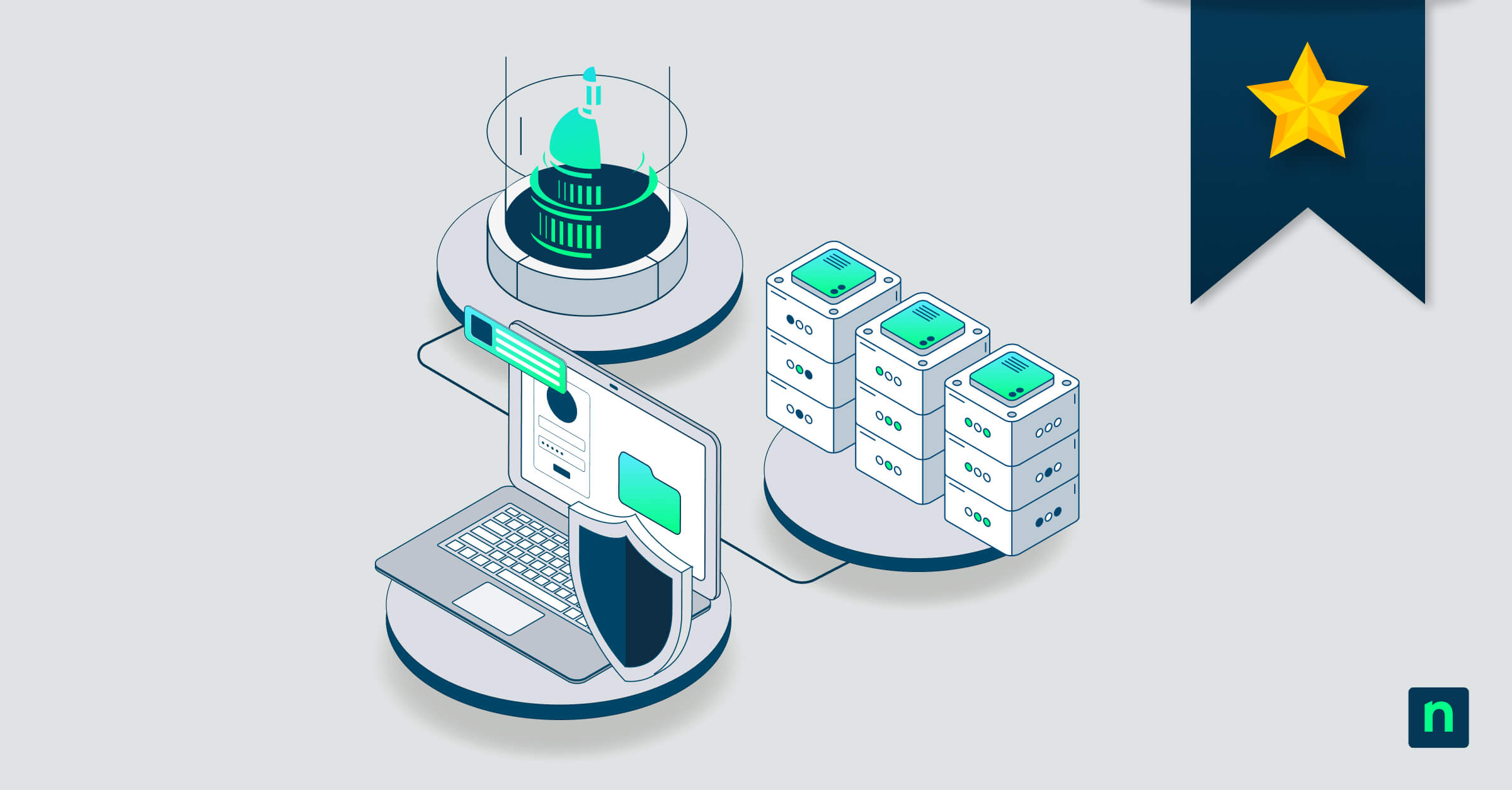While Jamf Pro is a well-known mobile device management (MDM) solution for Apple products, such as Macs, iPhones, and iPads, it is not without its limitations. Some organizations look for Jamf alternatives due to cross-platform compatibility. Since Jamf focuses solely on Apple products – Jamf has created a niche and developed a great reputation for same-day Apple OS support. It also enables IT teams to remotely monitor, manage, and support their end-users and provide a seamless Apple experience.
Deploy, manage, and secure your Apple endpoint devices from single, unified platform.
➤ Explore the features of NinjaOne MDM Apple
However, since Jamf cannot support any other operating system, such as Android, businesses must use another MDM. If your IT enterprise manages several organizations that use these OS, you may be looking to lessen your technology stack by looking into a unified endpoint management solution. If this sounds familiar, you may be shopping around for Jamf competitors and deciding which MDM solution is the most suitable for your business.
That’s where we come in. We’ve evaluated the top options, and written this guide to help you make the most informed decision.
Key features of an MDM solution
It is important to first know what features to look out for in an MDM solution. While many software providers may offer the same functionalities, they differ in reliability, integration capabilities, and customer support. It is also worth noting that while there are many alternatives, you should always select software that best matches your needs and unique business environment.
- Unified management. A good MDM solution provides a fully functional and centralized dashboard where your IT technicians can easily and seamlessly control all mobile devices.
- Reporting and analytics. Your MDM solution should give you detailed and valuable insights into each mobile device’s health and performance.
- Ticketing and helpdesk. An MDM tool should provide two-way communication on any end-user issue.
- Easy device enrollment. It’s important that your MDM solution can easily enroll multiple mobile devices.
- Supported devices. A robust MDM allows you to manage multiple devices across different operating systems.
Does Jamf check all the boxes for you? Let’s now look at the top alternatives in the market today.
1. NinjaOne
NinjaOne is a powerful unified endpoint management software solution that has become the go-to choice for over 20,000 satisfied customers worldwide. With the guiding philosophy of “power through simplicity,” NinjaOne endpoint management is designed to be simple to deploy, intuitive to use, and painless to manage. As an integrated platform, Ninja allows you to remotely monitor and manage your Windows, macOS, and Linux devices in a single pane of glass.
5 reasons to choose NinjaOne over Jamf
1. All-in-one solution
NinjaOne UEM is an all-in-one solution that gives you the tools to drive radical efficiency from day one. Offering robust MDM capabilities built into its unified endpoint management platform, NinjaOne enables IT technicians to seamlessly monitor, manage, and control all types of endpoint devices. NinjaOne is a strong choice for a Jamf Pro alternative as it offers more comprehensive support for various operating systems, desktop servers, and network equipment.
2. Patch management
One reason users look for Jamf competitors is its patch management. NinjaOne ranks highest among the best patch management software on the market today and with good reason. NinjaOne empowers you to identify, evaluate, and deploy patches to any device from anywhere with an internet connection. With NinjaOne, you spend 90% less time patching with automated patch management.
3. Easy to use
Jamf has a decent learning curve, which may be a limitation for leaner teams. NinjaOne addresses this with its painless onboarding and free and unlimited training. Additionally, Ninja dramatically reduces the time you spend on manual tasks. The numbers speak for themselves: 95% of clients experienced greater IT efficiency in just months, and 82% replaced 3 to 4 tools with NinjaOne.
4. Faster ROI
Investing in a unified endpoint management solution is more cost-effective in the long run. When considering the cost of UEM, look for a fast time-to-value and a low total cost of ownership. As a 100% cloud-based solution, NinjaOne quickly sets up and requires minimal ongoing maintenance. Its software is easy to use and powerful from the start so you can be more confident of a faster ROI.
5. Reporting
NinjaOne’s IT reporting tool allows you to tell more impactful stories to your stakeholders. It delivers a comprehensive overview of your IT ecosystem while streamlining report generation through automation. Additionally, its IT reporting tool offers valuable insights into your IT network that can guide more strategic decision-making,
Deploy, manage, and secure your Apple endpoint devices from single, unified platform.
➤ Explore the features of NinjaOne MDM Apple
Strengths of NinjaOne
- Real-time monitoring and alerting. NinjaOne uses up-to-date endpoint health and performance data to generate context-rich alerts and launch automated workflows for more proactive IT management. You can use any of the over 100 monitoring templates Ninja offers or create your own monitors to notify your IT technicians of any endpoint changes.
- Secure remote access. NinjaOne integrates with leading remote control tools so you can access and manage Windows and macOS devices right from your NinjaOne console. NinjaOne has meticulously created one-click-to-connect integrations so third-party remote tools always feel native to your Ninja platform.
- Endpoint task automation. Like all Ninja products, its unified endpoint management software automates tedious and repetitive tasks, allowing your IT team to focus on more strategic projects.
- Form-based script deployment. NinjaOne’s endpoint management automatically deploys any script to any set of devices at any time. With its one-click deployment, Ninja allows you to deploy scripts in common languages, including Powershell, Javascript, and VBScript, in a matter of seconds for real-time troubleshooting.
- Customer support. NinjaOne is healthily obsessed with its customers’ success. Rated #1 in customer support for years, the team boasts one of the fastest first-response times of 30 minutes from receiving an IT ticket and a market-leading 97% CSAT (customer satisfaction score).
Customer story
Brennan Olson, IT Director of Feltl and Company, was looking for a tool to give him and his team remote access and visibility into their IT environment. After trialing several other vendors, he found NinjaOne to be the most cost-effective and intuitive – giving him the space to breathe and focus on his main tasks.
“Since implementing NinjaOne, I’ve become 70% more efficient. I can resolve tickets 98% faster, and I’ve automated our entire software deployment process. Those automations save me over 100 hours a month,” said Olson. “NinjaOne’s mobile app lets me push out patches, reset passwords, and even deploy software from anywhere. It’s so convenient and keeps my end-users happy, while giving me more flexibility.”
Read more Ninja customer stories or check out NinjaOne reviews.
Pricing information
NinjaOne’s IT management software has no forced commitments and no hidden fees. If you’re ready, request a free quote, sign up for a 14-day free trial, or watch a demo.
Reviews
- 1,106 reviews (at the time of writing)
- 4.8 / 5 stars
- 207 reviews (at the time of writing)
- 4.8 / 5 stars
2. Kandji
Kandji is an Apple device management and security platform. Its platform helps IT teams update software, resolve vulnerabilities, and prevent problems in their entire Apple fleet from a single console.
Features
- Patch management. Kandji automatically patches Apple software and keeps your endpoint devices healthy.
- Real-time scanning and monitoring. Kandji provides real-time information on all your managed Apple devices.
- Centralized management. Kandji offers end-to-end visibility into your entire Apple fleet so you can make more informed decisions.
Shortcomings
- Limited integrations. Kandji offers only a few integrations, which forces users to look for other third-party vendors for specific needs.
- Basic search and reporting tool. Some G2 users have found Kandji’s reporting tool to be limited compared to other products.
- Only manages Apple devices. Users must rely on separate solutions for other non-Apple operating systems.
3. IBM Security MaaS360
IBM Security MaaS360’s unified endpoint management solution helps you manage and protect your mobile workforce. The tool manages iOS, Android, iPadOS, macOS, and Windows endpoints.
Features
- Endpoint management. MaaS360 helps you monitor and manage multiple devices from a centralized management platform.
- Native security. The solution detects vulnerabilities and automates remediation across your users, devices, apps, and networks.
- Integrations. MaaS360 integrates with dozens of business applications to improve your productivity.
Shortcomings
- Learning curve. MaaS360 may be better suited for more experienced IT technicians.
- Tends to lag. Some users on G2 say that the platform tends to lag as you perform more actions.
- Clunky interface. MaaS360 can sometimes be difficult to navigate around or use.
4. Addigy
Addigy is a cloud-based MDM platform that allows IT teams to manage their iOS, macOS, and iPadOS devices from anywhere in the world. Built with multi-tenancy, Addigy allows MSPs to manage multiple organizations from one dashboard. IT professionals can create custom bash scripts through Addigy to customize their automation to streamline workflows.
Features
- Application management. Addigy allows users to distribute ready-to-deploy apps and custom apps to Apple devices.
- Automation. Users can automate repeatable processes to reduce the need for manual intervention.
- Compliance, IT teams can configure policies to ensure devices comply with industry regulations.
Shortcomings
- Policy management. Users find the process of enforcing policies complex and challenging.
- Scripting. Reviewers say that implementing custom scripts can be difficult.
- Complex interface. Addigy’s user interface can be difficult to use and navigate, such as moving devices between policies.
5. Hexnode UEM
Hexnode is a Unified Endpoint Management (UEM) solution that consolidates the tools IT teams need to remotely their Android, iOS, Windows, and macOS devices, Real-time data and alerting allows technicians to resolve issues quickly.
Features
- Device enrollment. Hexnode offers multiple methods to on-board new devices, ranging from no-touch to minimal touch.
- Application management. IT administrators can install, uninstall, and update applications on managed devices.
- Remote monitoring. Users can view real-time information and metrics of their endpoint devices.
Shortcomings
- Scalability. Since Hexnode focuses on small to medium-sized organizations, it can struggle to accommodate larger mobile fleets.
- Slow performance. Reviews on G2 say that some actions, such as iOS syncing, can take some time.
- Complex interface. Users find that Hexnode’s interface is difficult and time-consuming to navigate.
6. Mosyle
Mosyle is an Apple MDM platform that centralizes visibility and control of macOS, iOS, and iPadOS devices for schools, businesses, and MSPs. With Mosyle, users can automate processes such as device and application deployment to reduce manual workloads. It also provides IT teams with the tools to secure BYOD devices.
Features
- Patch management. Mosyle automates the deployment of operating systems and application updates.
- Remote access: Technicians can provide remote support with Mosyle’s encrypted screen-sharing and remote management.
- Endpoint security. Users can enforce security policies and auto-remediate devices that do not comply with these policies.
Shortcomings
- Learning curve. Reviews say Mosyle demands time and resources to learn fully.
- User interface. Mosyle’s interface can be challenging to use and reviewers find the design elements small.
- Customer support. According to reviews, Mosyle’s documentation can be lacking and customer service takes some time to respond.
7. Microsoft Intune
Microsoft Intune is a cloud-native endpoint management software with MDM capabilities that focuses on seamless integration with other Microsoft’s other solutions. InTune’s MDM software enables users to deploy applications, manage devices, and deploy security policies across an organization’s mobile fleet.
Features
- Microsoft ecosystem. As Microsoft’s endpoint management solution, InTune integrates with Azure Active Directory and other Microsoft products.
- Application management. With InTune, IT administrators can blacklist/whitelist applications and install and update them.
- Device configuration. InTune streamlines device enrollment and
Shortcomings
- MDM issues. Integrating and managing Apple mobile devices makes it challenging to use.
- Slow performance. Users find that InTune responds slowly and the platform is prone to lag.
- Set up. InTune’s steep learning curve and complex interface makes it require more time and resources.
8. Miradore
LogMeIn Miradore is a cloud-based MDM solution for Android, iOS, Windows, and macOS. Miradore provides real-time data and analytics of an organization’s mobile fleet. This platform also saves time for IT teams by automating mobile device enrollments at scale.
Features
- Remote support. Technicians can use Miradore’s remote access features to troubleshoot and resolve issues.
- Endpoint security. Miradore secures endpoints with device encryption and remote lock/wipe.
- Application management. Users can deploy, uninstall, or blacklist/whitelist applications.
Shortcomings
- OS support. Some of Miradore’s features vary across different platforms which can make it difficult to manage devices consistently.
- Documentation. Miradore’s documentation is not always up-to-date.
- Automation. Reviews on G2 say that automated shutdown and patching can’t be scheduled.
9. Esper
Esper is an MDM solution that centralizes device management for Apple and Android tablets, kiosks, and smartphones. Remote monitoring tools provide IT teams with complete visibility of their mobile fleet. This allows technicians to respond to issues swiftly, minimizing downtime.
Features
- Patch management. Users can push out the latest versions, updates and security patches for mobile applications.
- Compliance management. Esper can enforce security policies, ensuring that mobile devices remain protected at all times.
- Device security. With Esper, users can safeguard sensitive data using passcode policies and remote lock/wipe functions.
Shortcomings
- OS compatibility. According to reviews, Esper offers less support for Apple mobile devices compared to Android.
- Remote access. Reviews say that connectivity issues and slow data transmission can cause delays.
- Reporting. Users say that they have difficulty generating reports.
10. ManageEngine Mobile Device Manager Plus
ManageEngine Mobile Device Manager Plus is ManageEngine’s MDM solution that provides users with comprehensive visibility and control of their Android, iOS, and iPadOS devices alongside their macOS and Windows workstations. ManageEngine’s platform simplifies device enrollment for both BYOD and corporate-issue endpoints.
Features
- Device security. ManageEngine allows users to configure and enforce policies that safeguard mobile devices and data.
- Remote support. Technicians can view and control mobile devices to troubleshoot and remediate issues.
- Application management. Users can distribute software to mobile devices and keep track of installed apps and licenses.
Shortcomings
- Challenging setup. Users find ManageEngine’s initial configuration to be challenging.
- Patch management. Reviewers have faced issues with ManageEngine’s automated update deployment,
- Documentation. G2 reviews say that documentation is not always kept up-to-date with the latest releases.
11. Scalefusion
Scalefusion is a UEM solution that consolidates remote management of Windows, Apple, Android, and Linux devices into one dashboard. This platform enables IT professionals to deploy new devices with all necessary policies quickly.
Features
- Automation. From onboarding to repetitive daily tasks, Scalefusion streamlines IT operations.
- Patch management. Scalefusion identifies and distributes the latest OS and third-party app updates.
- Reporting. Users can get insightful reports on device management and security to make more informed decisions.
Shortcomings
- Interface. Users find the interface confusing and setting up configurations and profiles is difficult.
- Documentation. Reviewers wish for more in-app tutorials and guides to make complex features easier to learn.
- Application management. Scalefusion’s app deployment lacks customization options and could be simplified.
12. IBM Security MaaS360
IBM Security MaaS360 is IBM’s UEM platform that enables IT professionals to manage diverse IT environments with cross-platform support for Windows, macOS, iOS, Android, and IoT endpoint devices. It centralizes IT tools into a single dashboard, streamlining workflows and improving productivity.
Features
- Remote monitoring. Users can keep track of device health, compliance with security policies, and more.
- Automation. MaaS360 automates repeatable processes at scale, such as device onboarding.
- Patch management. This solution detects vulnerabilities and automatically deploys needed patches and updates.
Shortcomings
- Customer service. G2 reviews say that technical support can be slow to respond and lack training.
- Alerting. Users have reported delays in notifications which can lead to late responses.
- Complex interface. MaaS360 requires additional training to allow users to make full use of the platform’s features.
Evaluating Jamf competitors
If you’re looking for alternatives to Jamf, you should start by discerning why you need an MDM solution and whether it would be more cost-efficient to use a UEM instead. Remember that there are no hard and fast rules when making this decision. Every software is different, and you should always choose the one that appropriately addresses your needs.

